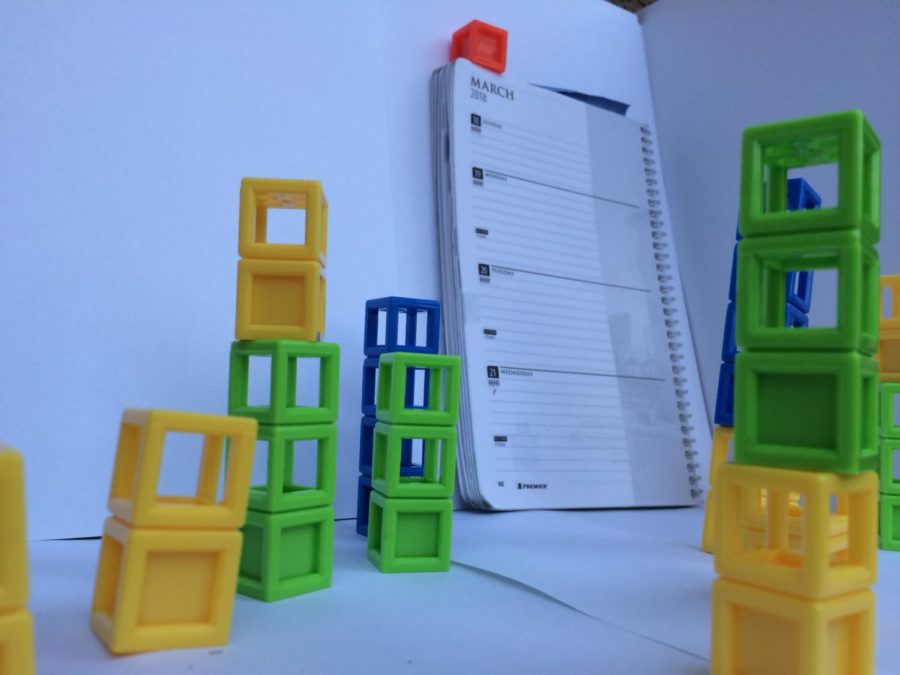Imagine having two days a week when you can put off half of your homework until the next day. Imagine only going to half of your classes and therefore having more time to do activities after school.
Two to five days a week of block schedule could better the lives of students and teachers, or it could do the opposite.
The transition from the traditional schedule to a form of block schedule requires the delicate balance between what students want, what students need, what teachers want, and what the teachers are willing to do.
“I like block schedule because it gives more leeway on homework that is due, and there’s just more time overall to get work done,” said Giovanni Smith, a junior.
Block schedule could help students better their academics because of the extra time for homework and studying. However, Carlmont still needs to determine whether block scheduling is a viable option.
“Due to the fact that Carlmont is a high performing school, and that the majority of the teachers are against it, there’s no reason to switch our bell schedule,” said Principal Ralph Crame. “Also, we are currently going through WASC (Western Association of Schools and Colleges) certification, which identifies an area of our school that may need improvement, so if changing to block will greatly improve an area of our school, this program will help us figure that out.”
Block schedule and traditional schedule are two entirely different schedules. The book “Overloaded and Underprepared” by Denise Pope, Maureen Brown, and Sarah Miles explains what they are.
A traditional schedule is the system that Carlmont uses. In this schedule, students go to all classes every day. Block schedule is when there are fewer periods in a day each semester, trimester, or quarter, which meet for more time per period than those in a traditional schedule.
According to the article, The Effects of Block Scheduling in the School Superintendents Association (AASA), one in three high schools in America currently uses some form of block schedules, but in some states, that number is much higher.
As so many schools use block schedules, many studies have found benefits as well as drawbacks of this type of schedule.
A few studies are consolidated in one article on the California Department of Education website called Block Schedules. It states that some benefits of using block schedule are that teachers get to know their students better, students have more time to get involved in projects, and lesson plans can go deeper into the material.
These reasons are only a couple of factors in why some students like block schedule.
“I like block schedule because it helps me balance my workload and manage my time better after school,” said sophomore Sarah Jolls.
The article also emphasizes the downsides of block scheduling. Some of these reasons are that teenagers usually cannot manage to focus for 90-minute periods, and the total course time is reduced, so teachers may not be able to cover all the material. Furthermore, if one day is missed, it’s the equivalent of missing two or three traditional days of the class.
For these reasons, some students dislike block scheduling.
Freshman Jennifer Ozmert said, “Block schedule is kind of a negative to me because 90 minutes in one class is a really long time to stay focused. There’s also the horrible possibility of the teachers assigning more homework than usual.”
According to the AASA article, “The most difficult aspects of a lesson plan for high school teachers seem to be the development of appropriate activities for the application phase of a lesson and the management of pacing and transitions.”
Looking at this, one could see how teachers would want to keep the old system so that they wouldn’t need to change their lesson plans; it would be time-consuming and require not just the rearranging of current activities, but the creation of entirely new exercises.
Felix Guzman, a regular and AP Chemistry teacher at Carlmont, said, “If we did switch to block, I would feel obligated to have a lab every time there was a 90-minute period, and it’s not really that difficult to give my students good labs on 50-minute days. It’s tough enough to keep students focused for 90 minutes no matter what activity we’re doing.”
On the other hand, block schedules would allow teachers to assign more time-consuming projects that wouldn’t have to be cut up into different days to complete. It would also be easier to teach long lessons that wouldn’t fit into one 50-minute class period, allowing for a complete understanding of an assignment.
“If some sort of modified block was used, I could give longer tests and more time for writing assignments,” said Jayson Waller, an AP and regular history teacher. “It could also help those students who can adapt, but for others, it could be more difficult.”
Needless to say, the transition from a normal schedule to a block schedule would be difficult and require an absolute go-ahead from most, if not all, of the teachers.
All other schools in the Sequoia Union High School District have had a form of block schedule successfully for at least two years. Students who are already using the block schedule system could have similar opinions as those from Carlmont who don’t have block schedule yet.
Sequoia utilizes a modified block schedule in which four days a week is block and the other traditional.
“I like Sequoia’s block schedule because there is always enough time to get the important things done rather than worry about what should be classwork and what should be homework,” said Sophie Cattalini, a sophomore at Sequoia. “It’s also nice because homework for a specific class is only due every other day, and that there are breaks in between the classes, like recess and lunch.”
Woodside uses a total alternate-day block schedule in which there are no days that students attend all classes.
Ian Ramsey, a Woodside junior, said, “Block schedule is infinitely better than a non-block schedule because there are two days to do homework, and there’s enough time in class to get everything done.”
While some students are excited about block schedule, the decision to make it reality isn’t up to them.
Crame said, “Whether Carlmont switches to block schedule depends on the need for it in Carlmont, and the teachers’ willingness to switch.”













